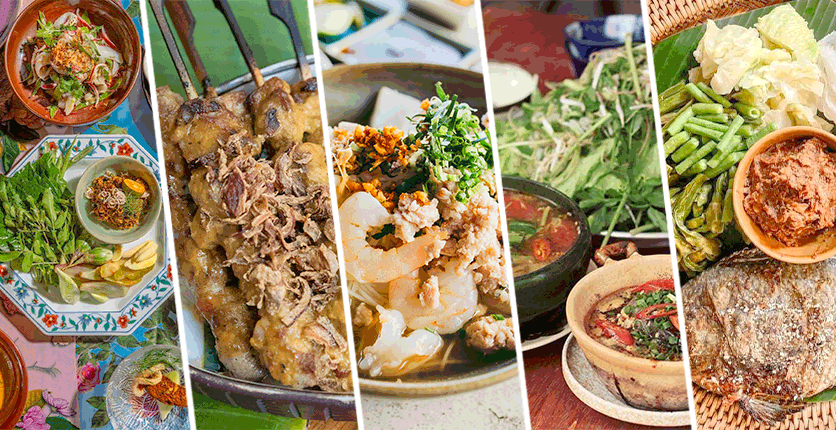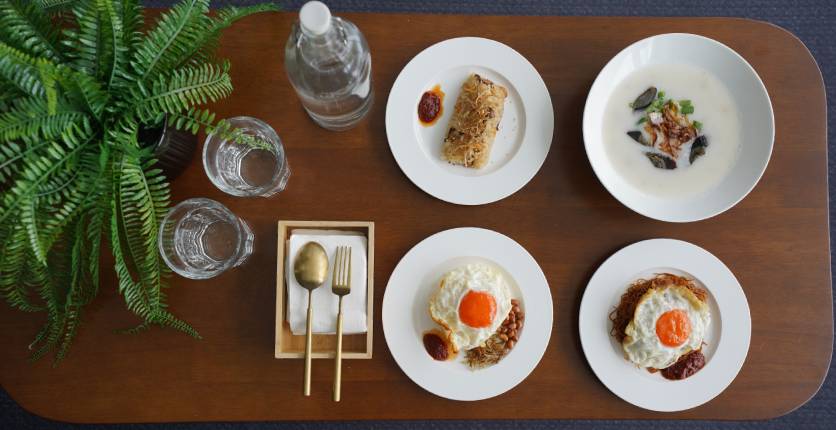With international borders opening up, it’s a great time to head overseas for some shopping, relaxation, and of course, feasting. Good food can be found just about everywhere in Asia, including these five destinations, which are as well-known for their humble street stalls as for their upscale restaurants.
Indonesia
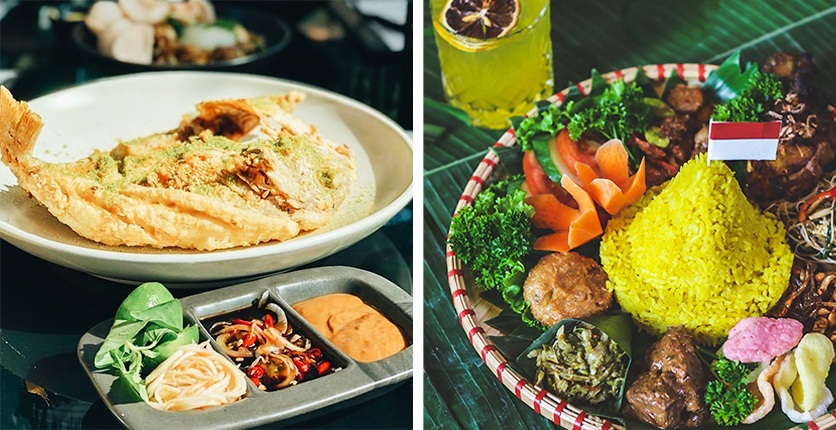
Indonesian cuisine varies according to region – the food in Sumatra, for instance, features Indian and Middle Eastern influences, while Javanese cuisine is a combination of indigenous and Chinese flavours. A number of dishes have also been influenced by the Dutch, who once colonised the archipelago.
One thing these regional cuisines have in common is their abundant use of herbs and spices. Sambal, made from chillies, shrimp paste, shallots and other aromatics, is a popular condiment in all of Indonesia.
Signature dishes:
- Tumpeng, a cone-shaped rice dish served with meat and vegetable dishes (the rice, which may be plain or flavoured and/or coloured, is cooked in a woven bamboo container).
- Try the rich, coconutty meat rendang; meatballs called bakso; grilled sate; and a spiced soup called soto.
Where to eat:
- Kaum, located in Central Jakarta, offers authentic Javanese dishes like nasi goreng, soto ayam and sate ayam (grilled chicken satay).
- If you’re in Bali, try Merah Putih, which serves roasted meats, grilled fish with spices, and a range of tofu, vegetable, rice and noodle dishes.
Thailand
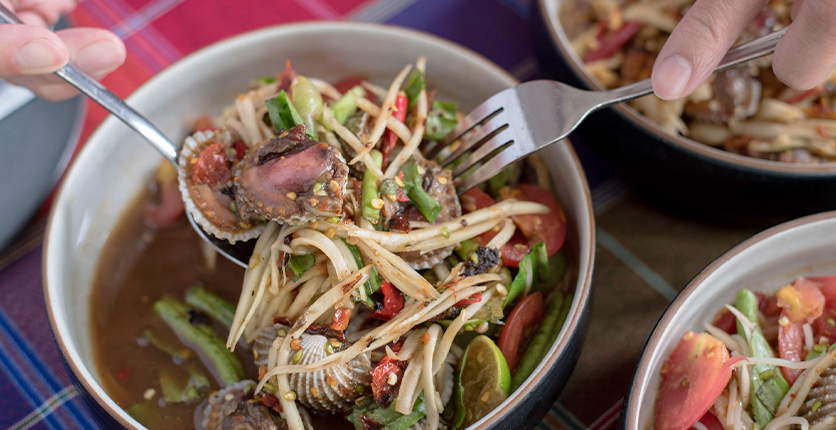
Traditional Thai dishes may be categorised as boiled (tom), spicy salad (yam), pounded (tam) or curry (gaeng). The cuisine is heavily influenced by the cuisines and culinary traditions of neighbouring countries, namely India, Cambodia, Malaysia and Indonesia. Chinese influences are apparent, too, in dishes that are steamed, stir-fried and deep-fried.
Thai food is often described as the perfect balance of sweet, salty, sour and hot (spicy). It’s also aromatic, thanks to the use of herbs and spices like lemongrass, galangal, coriander, pepper and kaffir lime leaves.
Signature dishes:
- You can’t beat a Thai curry, whether massaman, green, red or yellow. These are thickened with coconut milk, spicy, and packed with meat or seafood, veggies and herbs. They go well with sticky or jasmine rice.
- Lighter dishes include tom yam goong (sour-spicy soup with prawns) and som tam (green papaya salad).
Where to eat:
- Charmgang Curry Shop is a cosy, unpretentious spot in Bangkok for Thai curry and stir-fried and grilled dishes.
- In Chiang Mai, check out Somtum Der, which offers several varieties of som tam (papaya salad with lime, tomato, chili, peanuts and palm sugar).
For something closer to home, try the authentic Thai cuisine at Siam Kitchen and spicy Thai-style hot pot at Suki Suki Thai Kitchen, both at SAFRA Toa Payoh. SAFRA members enjoy 15% off the total bill.
Vietnam
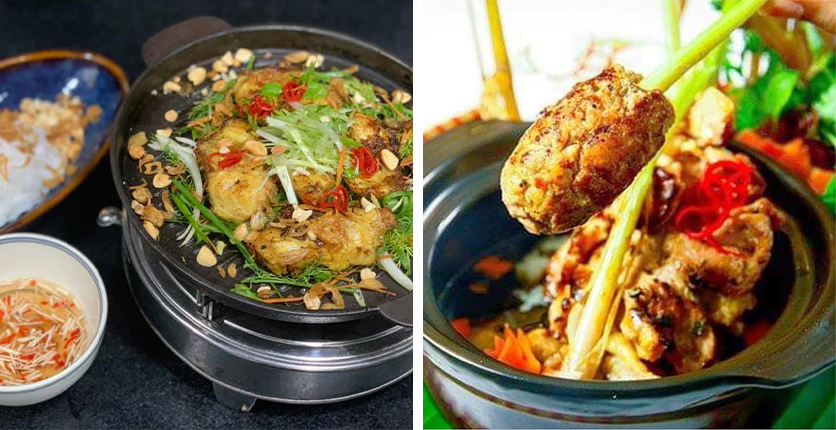
Vietnamese cuisine is delicate yet complex in flavour and is considered mostly healthy as it’s low in sugar and doesn’t contain much dairy or oil. Most dishes feature fresh herbs and spices, like lemongrass, mint, ginger, coriander and cinnamon. Fish sauce adds a salty, umami flavour to savoury dishes.
Vietnamese food shares many similarities with Chinese food – think roasted pork and braised pork belly. It also features Malaysian and Cambodian influences. The French, which colonised Vietnam in 1877, introduced coffee and baguettes to the Asian country.
Vietnamese food centres on five flavours: sweet, sour, bitter, spicy and salty.
Signature dishes:
- Pho is a traditional dish comprising rice noodles and meat slices or meatballs in a clear, lightly spiced meat broth. Fresh herbs and bean sprouts are typically served on the side.
- Common snacks and side dishes include banh xeo (crispy, stuffed rice pancake), goi cuon (rice paper rolls) and chao tom (prawn paste on sugarcane).
Where to eat:
- Duong’s Restaurant in Hanoi Old Quarter serves Hanoi specialities like BBQ pork and grilled fish.
- Feast on homecooked dishes at Secret Garden in Ho Chi Minh City. On the menu: banh xeo, stir-fried dishes, grilled meats and more.
Discover the street food of Ho Chi Minh City from the back of a motorbike on this tour by Klook. All NSmen enjoy 10% off all activities with min. $50 spend (capped at $10); more info at safra.sg/promotions/klook
Laos
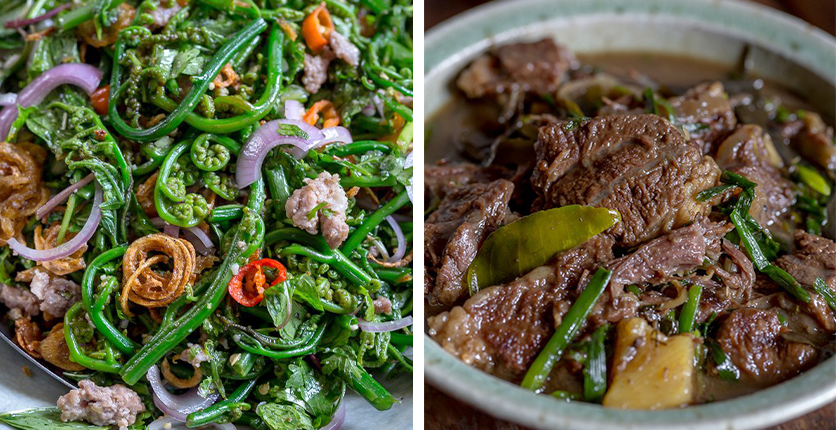
Sticky rice, or khao niew, is a staple in Lao cuisine. It’s served in small bamboo baskets alongside main dishes and sauces (jaew). Laos was once part of French Indochina; its cuisine therefore bears some French influences – for example, baguettes are widely eaten here. Other famous Lao dishes include green papaya salad and a marinated meat salad called larb. Lao cuisine is fresh and healthy and uses plenty of herbs and vegetables, like wild betel leaves, mint, ginger flower and bamboo shoots. One of Laos’ best-loved ingredients is pa daek, a claypot-fermented fish that’s full of umami flavour.
Signature dishes:
- Larb is made from minced meat flavoured with fish sauce, fresh herbs, lime juice and toasted sticky rice powder. It is served raw or lightly cooked.
- Paeng pet is not for the faint-hearted – this is raw duck (or goat or pig) blood to which minced meat, offal, herbs and chillies have been added. Another popular dish is khao piak sen – rice noodles in a thick gravy-like soup.
Where to eat:
- Doi Ka Noi in Vientiane serves authentic Lao food like slow-braised beef cheeks, rice cracker salad and sour fish soup.
- Kualao Restaurant, in Vientiane, uses local ingredients like wild fowl and pine mushrooms. Try the Pa Kao (set menu) which lets you sample a number of traditional dishes.
Cambodia
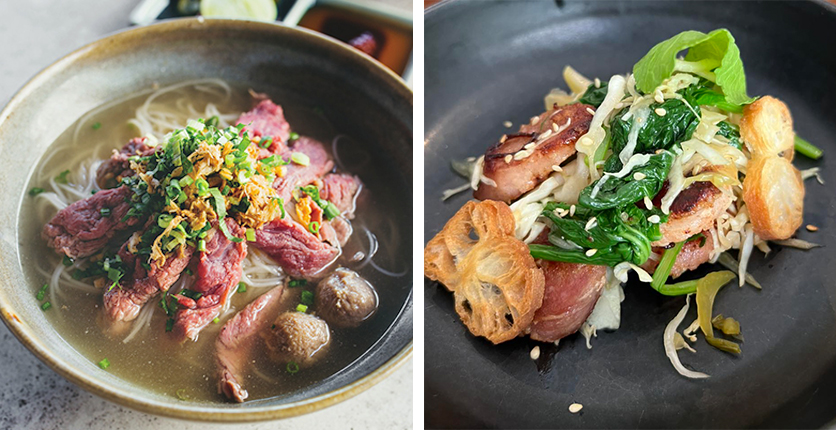
Cambodian cuisine incorporates elements of Indian, Chinese and French cuisines and is similar to Thai, Vietnamese and Lao cuisine in many ways. It also encompasses the cuisine of the Khmer people, which make up more than 90% of Cambodia’s population. Khmer cuisine uses plenty of herbs and spices but no chilli. A hallmark dish is prahok, a salted and fermented fish paste that’s usually eaten with rice and vegetables.
Signature dishes:
- Fish amok is considered the national dish. This seafood curry, which has a mousse-like texture, is steamed and served in “bowls” made from banana leaves. Amok can also be made with beef and chicken. Another cherished dish is samlor korkor, a hearty soup made from fish and pork belly and flavoured with prahok and a curry paste called kroeung.
- Popular breakfast dishes include Khmer noodles, or nom banh chok, which features rice noodles topped with green curry and herbs; and bai sach chrouk (pork and rice) – grilled pork slices that have been marinated in palm sugar and fish sauce, served atop a mound of rice.
Where to eat:
- With two locations in Phnom Penh and Siem Reap, Malis Restaurant serves authentic Khmer food, including a range of breakfast dishes.
- Cuisine Wat Damnak combines Cambodian flavours with French culinary techniques. The ingredients are almost entirely sourced from nearby farms and villages around Siem Reap and Phnom Penh and other provinces.
Recreate your Cambodian gourmet experience at home with this Siem Reap cooking class by Klook. All NSmen enjoy 10% off all activities with min. $50 spend (capped at $10); more info at safra.sg/promotions/klook
Check out more delicious promotions and foodie deals for SAFRA members here.
Want more articles like this, and other lifestyle content right in your inbox? Download the new SAFRA mobile app and opt in for the eNSman Newsletter – you don’t need to be a SAFRA member to subscribe – and never miss another story!
